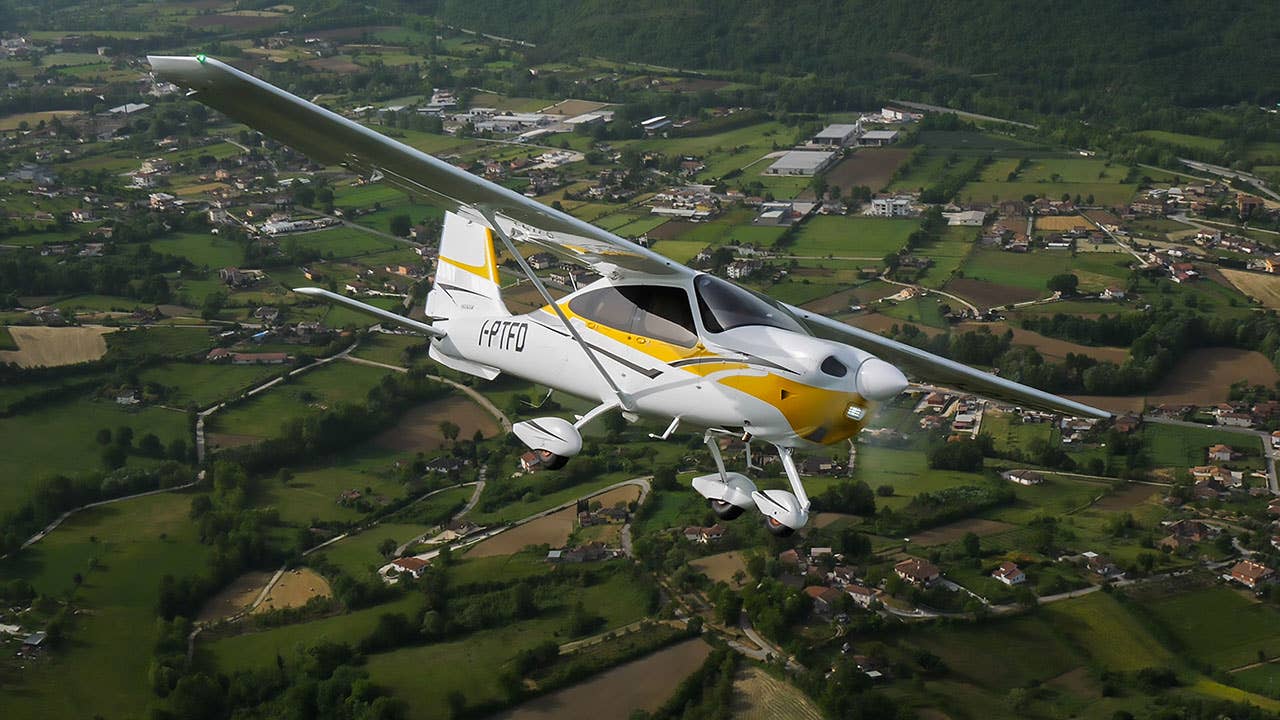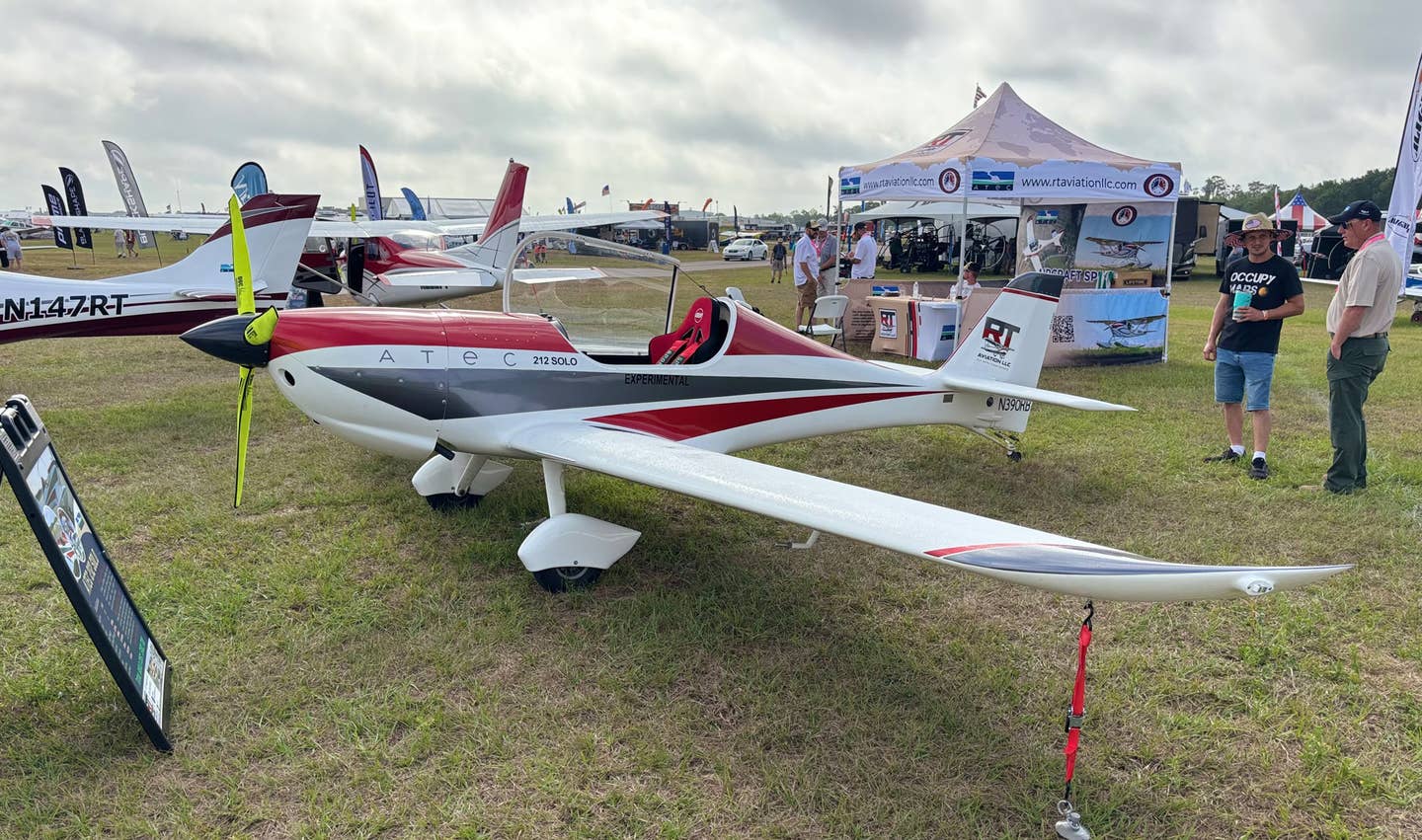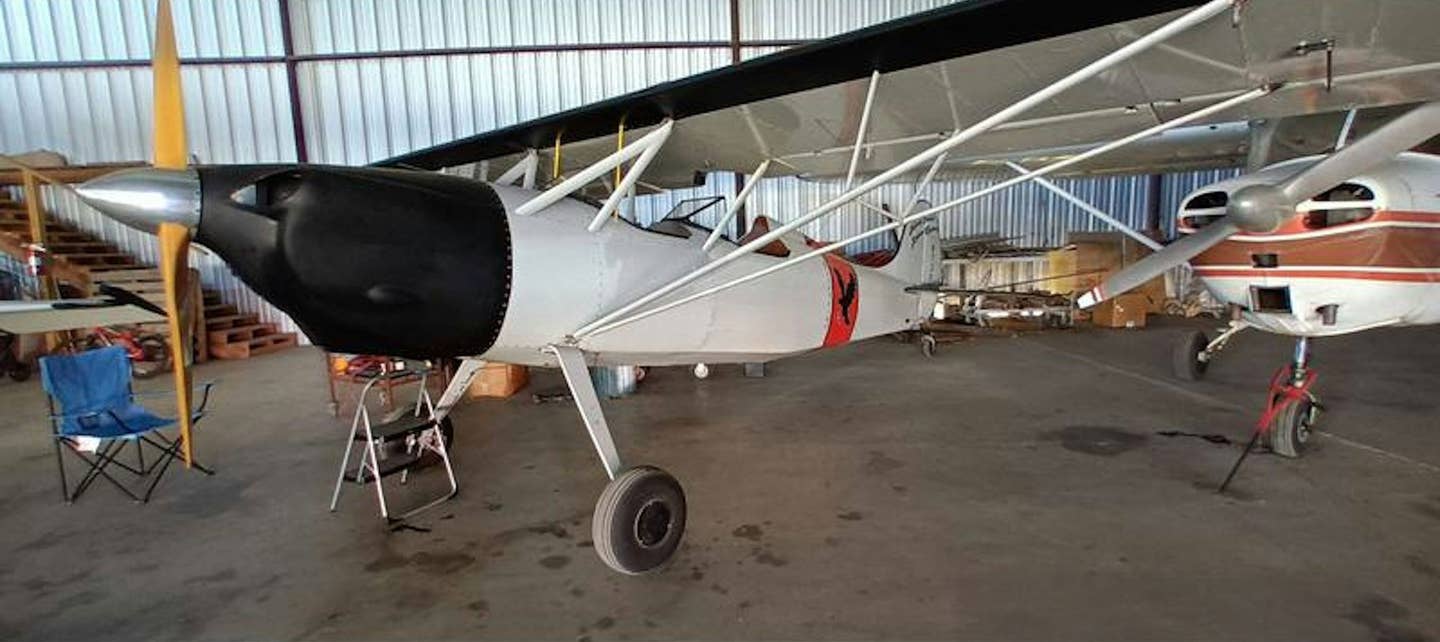Light Personal Aircraft Are Coming
This expanded definition of what constitutes a light plane and how they can be built could revive a segment facing existential challenges.

Light but highly capable single-engine airplanes, like this Tecnam P-2010 TDI, are the kind of planes that will likely be hot sellers under the FAA’s developing plan to liberalize light aircraft certification and the rules for flying them
The Light Sport Aircraft (LSA) segment, created by the FAA in partnership with industry leaders way back in 2004, was an exciting change. Along with the new Sport Pilot certificate, the LSA rule looked to reinvigorate light aviation.
It didn't work out that way, in large part because LSA were so limited and most had challenging flying manners. So the light GA segment of 2021 is largely in the same shape as it was in 2004. None of the challenges we faced back then have gone away. Indeed, most have gotten worse.
But a coming new segment, known as Light Personal Aircraft (LPA), stands the chance of fundamentally changing the light GA marketplace, reinvigorating it with new planes and new ideas. The existing LSA segment would continue as a sub-section of the LPA rule, and LSA would benefit from the rules rewriting. A final rule could come as early as 2023. And the changes I'll discuss are but a few contained in the sweeping initiative known as MOSAIC.
When we think of personal flying, we generally think of Part 23 certificated light (mostly under 4,000 pounds), single-engine piston planes that carry between two and six people. Admittedly, this slice of the pie leaves out a lot---light multi-engine planes, Light Sport Aircraft and amateur-built aircraft, among others. But when it comes to getting an airplane or upgrading to a different one, most of us think of light Part 23 planes, like Cessna 150s or Skylanes, Beech Bonanzas, Mooney 201s or Cirrus SR22s, to name just a few.
Part 23 of the Federal Aviation Regulations allows for a huge diversity of aircraft, from two-seat trainers to small jets. And when the FAA first started noodling over certification reform more than two decades ago, it eventually came up with a whole new segment---Light Sport Aircraft. One of the main arguments that just about everyone interested in certification reform voiced was that Part 23, under which Cessna got its nearly 400-knot CitationJet certified, was too complicated, costly and involved a process for small, simple aircraft. That process, everyone also agreed, necessarily made the certification process for light planes too expensive to justify given the relatively small market for such aircraft. Consequently, few new aircraft were being brought to market.
Enter the Light Sport rule. Now, there are a few great ideas behind the LSA category. First and arguably most importantly, it took the FAA almost completely out of the certification process, ditching Part 23 for what are known as industry consensus standards. In short, industry members meet and decide on the standards used to manufacture aircraft that companies can sell ready to fly, as opposed to kit aircraft, which the buyer must build themselves.
Like LSA, higher-performance Light Personal Aircraft would also earn certification through adherence to industry consensus standards, a change that could greatly reduce the cost of developing and manufacturing these new aircraft.
"Like LSA, higher-performance Light Personal Aircraft would also earn certification through adherence to industry consensus standards, a change that could greatly reduce the cost of developing and manufacturing these new aircraft."
The Problems With Light Sport Aircraft
There were also a few not-so-great ideas behind these standards. The FAA, with help from LSA designers in the execution, botched this job because it made two assumptions that turned out directly counter to safety.
The first was the lighter an aircraft is, the safer it is. LSAs are limited under most circumstances to 1,320 pounds compared to around 2,500 pounds for a Cessna 172, one of the safest light planes ever made. In theory, heavier aircraft aren't necessarily safer than lighter ones, but in practice, they usually are. I've flown hundreds of different models of light aircraft, and some of the most difficult to fly are LSA.
Speed is complicated. When asked if the Cub, since it was so slow, was a safer kind of plane, an early aviator said that it was slow so was, therefore, "just barely fast enough to kill you." The truth was, Cubs were and still are involved in plenty of fatal accidents. LSAs might be slow, but they are plenty fast enough to kill you.
The FAA was equally off base with its assessment of the safety associated with speed when it dialed down the maximum stall speed of LSA to 45 knots, compared to the 61-knot stall speed for single-engine Part 23 planes. The thinking here is easy enough to see. Make these planes stall slowly, and off-airport adventures will be more survivable. But is that true?
The difference between the maximum stall speed of an LSA and that of a Part 23 single is 16 knots, which is big enough, but aerodynamically speaking, lift doesn't act mathematically but, rather, geometrically, so getting down to 45 knots is a tall order, one that requires a lot more lift than one might think. So, weights need to be kept way down and wing surface area must be greatly increased.
The result of the FAA's definitions was an initial generation of LSA, most of which are a challenge to handle at slow speed, especially in windy conditions and even more with gusts. The light weight of the plane means less momentum, so the plane reacts more quickly to gusts, and the greater lift exacerbates that flightiness. Think butterfly in a windstorm.
There are two-seat, Part 23 planes that stall at or below the LSA maximum of 45 knots, and those planes, which include the Cessna 150/152 and Diamond DA-20, handle better near the runway than most of their LSA counterparts. So you can make a very light plane that handles well enough at slow speeds even in windy conditions, but it's apparently not that easy to pull off.
The solution is to add pounds to the LSA maximum weight figure of 1,320 and add a few knots to the max stall speed as well. You'd then have planes with more presence that aren't as flighty when it's windy.
The FAA also accidentally disallowed electric propulsion in its sloppy wording of a regulation intended to rule out turboprop power, something that makes such little sense for an LSA that we wonder why it needed specific mention at all. But those are the dangers of writing regs, the unintended consequences.
Bigger LSA Are Coming. Hooray.
The news leaking out of the virtual beltway is that a new generation of LSA is on its way that will include a new umbrella category called Light Personal Aircraft. The existing LSA category would be under the LPA category. But the continuing good news is that LSA would get weight and performance increases across the board, though, admittedly, details are sparse. The added heft and speed of LSA will only serve to make them safer, something the FAA and the authors of the new rules seem to get.
These new craft will very likely be able to be flown with the LSA-style driver's license medical, which would breathe new life into one of the greatest ideas behind LSA, that FAA medical standards for flying small planes are overkill.
As you might know, LSA are today divided in two, those that you can buy ready to fly (SLSA) and ELSA, those you buy in kit form but need to build yourself (often with some judicious help from friends). The chief benefit of the DIY option is cost. You do the work, and you can cut a lot of the cost out of the new-plane cost calculus.
And that has been a big complaint about LSA since shortly after the rule's inception, that LSA were supposed to cost less, but they still cost a lot. A bigger, faster, roomier sub-Part 23 plane that the buyer does a lot of the work on could, at least in theory, provide an attractive avenue for new plane buyers, most of whom, it seems, are priced out of the new plane market. And with good-quality existing Part 23 singles getting rarer by the minute, and their prices rocketing up in recent years, it's likely that new planes could once again compete with used ones.
LPA are likely to be a lot more airplane, too, but so are LSA, which would benefit from years of improved understanding about what works with these planes and what doesn't.
The upper end of LPA, on the other hand, will be a whole animal, with higher weights, occupancy limits and allowable speeds at both the low and high end of the airspeed indicator. While these possible specifications are just that, it is safe to say that LPA will include a type of aircraft that is able to be much faster and roomier than current LSA. They are, in fact, likely to closely resemble some of the archetypal Part 23 models that define the lower end of the category, such as the fixed gear sub-200 hp Piper PA-28 or Cessna 172.
It's probable that we'll get four-seaters that can cruise at rates well beyond the LSA speed limit of 120 knots. There's likely to be a maximum power output of 200 hp, and, as far as weight is concerned, according to an article by light sport aviation guru Dan Johnson, the maximum weight of a plane would not be a set number but, instead, one based on a mathematical formula that takes into account weight, wing area and horsepower. Top allowable airspeeds for higher-performance LPA are unknown, but if the FAA gets it right and it's a big number---I'd say at least 150 knots---that would open the door to some remarkably useful new planes because I have zero doubt but that designers can and would create such planes.
Driver's License Medical?
The FAA continues to dangle pilot privileges in touting its conventional Third-Class medical certificate, and it's possible that to fly some of these larger and faster next-gens, pilots might need at least a Basic Med certificate---we sincerely hope the final rule doesn't require a Third-Class medical, though we wouldn't be shocked if that's what happens. The benefit of the new category would still be worth it for the new planes it would engender, but for many pilots struggling with conventional FAA medical certification who want to fly small planes, it would be a shame if that happens. Fingers crossed that the FAA gets this one right.
There are other privileges with LSA, such as the ability to do work on your own plane, including procedures that the FAA in Part 23 reserves for licensed mechanics. The cost savings at annual time alone would be huge, and the FAA, Johnson writes, is likely to continue to let owners work on their own LSA, even though their weight and speed would increase as part of the new rules. Owners of higher-performance LPA would need to take their planes to the shop, as we pretty much always have to do with Part 23 models.
Another big question---in fact, the most critical for many pilots---is, will existing Part 23 models that meet the definitions of LPA (whatever those specs wind up being) be able to be flown by pilots as though they were LPA (as you can do with today's LSA)? If so, the new LPA rule could wind up being a backdoor to a driver's license medical for planes that today require Basic Med at a minimum. That would be huge.
There's More
With LPA still a work in progress, there's much we still don't know about what a final rule might look like, and there are several peripheral questions that will affect who can fly these planes and under what conditions they can.
It's not yet known whether some LPA will be allowed to be operated under instrument flight rules (IFR), though from a safety perspective, that seems a no-brainer. A pilot with an instrument rating in an airplane equipped for IFR should absolutely be allowed to practice those privileges without restrictions beyond those currently in place (such as currency). Requiring a pilot to stay VFR while in instrument conditions, or near instrument conditions, is a prescription for disaster.
Will they be allowed to be used for flight instruction for compensation, a subject the FAA is currently struggling to understand and regulate coherently? Or could you use an LPA for sightseeing fights or aerial survey work? We simply don't know, though as before, I'd counsel a liberal set of initial rules.
A Light Personal Aircraft Future?
Those who remember the rollout of the LSA category likewise remember the root-canal-level teething pains it came with, as I've outlined above. Hopefully, the authors of the new proposal will take those failures into account in drafting the new rules. By all accounts, they are. That's not to say there won't be surprises---there assuredly will be. But at least we won't be tacking those on to mistakes we already know about.
In anticipating this new rule, pilots will surely be envisioning the planes of the future---I know that I am. But who will build them? Will Textron Aviation or Piper Aircraft or Diamond be at the fore, or will the current lineup of LSA makers, most of which make only LSA, be the main force in the new crop of planes? Or will new makers emerge as Cirrus did in the Part 23 arena, with a new model that pilots will just need to have.
The answer, I'm betting, is yes to all of the above. Traditional Part 23 manufacturers struggled with their embrace and execution of LSA models---no one invested more or lost more than Cessna with its ill-fated model 165 Skycatcher. But with bigger, more conventional planes, could the big manufacturers of today get this one right? I don't know.
But I do know that if the FAA goes big on this rule and keeps the definitions as flexible and liberal as possible, we could be looking at an exciting new crop of light planes that will satisfy the marketplace for substantial and really useful planes that consumers will just need to buy.
Me, I'm envisioning a four-seater that can do 165 knots and be purchased ready to fly for less than $200K. It's not going to show up tomorrow, but if the LPA rule comes to pass in a form that will allow such craft, a plane like that is a distinct possibility, and one that could help reinvigorate a troubled segment in a way not seen for more than 75 years. With LPA, such a renaissance for light GA is not only possible but, I'd argue, impossible to avoid.

Subscribe to Our Newsletter
Get the latest Plane & Pilot Magazine stories delivered directly to your inbox






